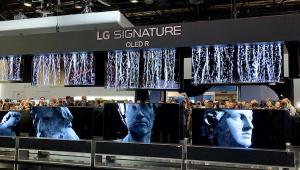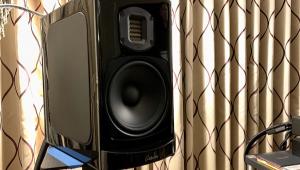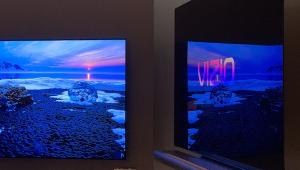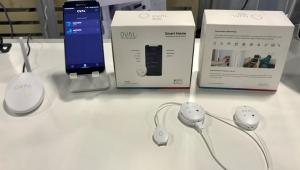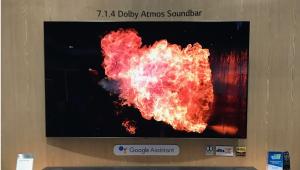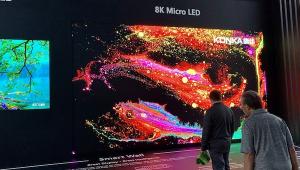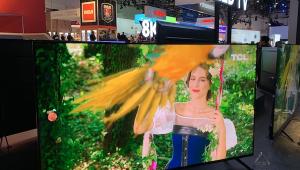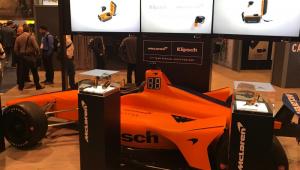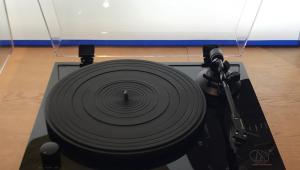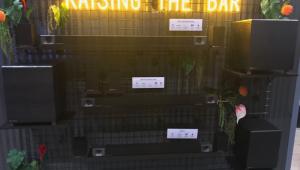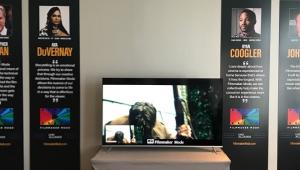TV Makers: Can You Hear Us Now?
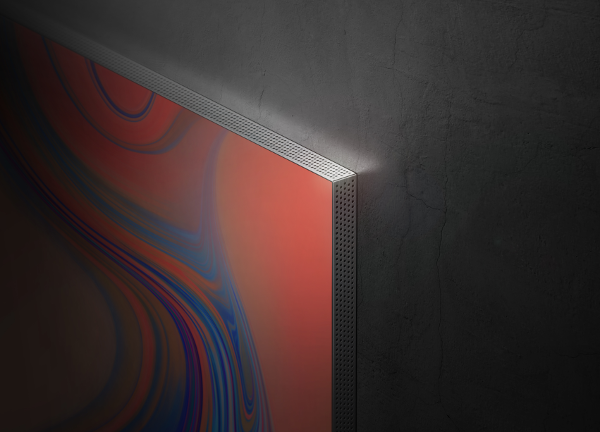
TV manufacturers are stepping up their efforts to fatten up the sound of thin TVs.
Here at CES, more 4K and 8K OLED and LCD TVs are equipped to decode Dolby Atmos object-based soundtracks from streamed and disc-based video sources. These TVs reproduce Atmos surround and height effects using only the TV’s built-in speakers. Other new TVs feature DTS Virtual:X post processing, which upmixes soundtracks with two or more channels to create height and surround effects for delivery through the TV’s speakers.
TV makers are also rolling out a variety of technologies to improve dialogue clarity and eliminate abrupt volume changes when video sources are switched, or TV programs transition to a commercial.
Here’s what you would hear if you were at the show:
Atmos Gains: Hisense and Sony are expanding their selection of Atmos-decoding TVs, with Hisense bringing the immersive surround technology to 12 models, up from two models in its 2019 lineup. And in its first OLED TVs being showcased at CES, the Funai-marketed Philips brand is including Atmos for the first time in TVs.
Sony details were unavailable, but in 2019, the company brought Atmos to its TVs for the first time, bringing the technology to all but two of its new TVs.
In LG’s 2020 lineup, Atmos will continue to be available in all 8K and 4K OLED TVs and premium NanoCell-series TVs. LG adopted Atmos in 2018. Atmos appeared for the first time in select TCL TVs in 2019.
DTS Virtual:X: Westinghouse and Hisense are showing their first TVs with the post-processing technology. Virtual:X appears in all six models in the Hisense 4K H65G Android TV series, due in the third quarter. They will come in 43-to 85-inch sizes at prices from $269 to $1,499.
DTS Virtual:X also appears in Westinghouse’s step-up edgeless 4K Roku TVs, which might be available in 50- to 75-inch sizes in the second half depending on retailer interest.

And More: For its part, Samsung hasn’t adopted Atmos but is promoting its own immersive post-processing technology, called Object Tracking Sound, in its new 8K quantum-dot TVs. These TVs leverage six built-in speakers (two on top, two on the bottom and one on each side) to better track the sound of an individual object on the screen.
In addition, Samsung’s 8K and 4K TVs get Active Voice Amplifier (AVA) technology, which uses a built-in microphone to listen for loud ambient noise in the room and boost dialogue.
Also in 2020, adaptive sound returns to all 4K and 8K quantum-dot TVs to optimize sound on a scene-by-scene basis and calibrate sound to compensate for viewing distance, room echoes, and room reflections.
For its part, LG is bringing new artificial intelligence (AI) features to all 8K OLED TVs, almost all 4K OLEDs, and all 8K TVs in the premium NanoCell LCD lineup. A third-generation Alpha 9 processor automatically detects the type of AV content playing and optimizes the picture and soundtrack according to one of four genres: sports, movies, animation, and standard programming such as news.
Separately, Westinghouse is upgrading the sound in all Roku TVs with DTS Studio Sound post processing, which delivers virtual 5.1 surround through a pair of speakers, improves dialogue clarity, uses speaker EQ to maximize performance, and features automatic volume leveling, the company said. The latter feature is designed to deliver consistent loudness when video sources are switched, when a TV program jumps to a commercial, and when content transitions between louder and softer scenes.
